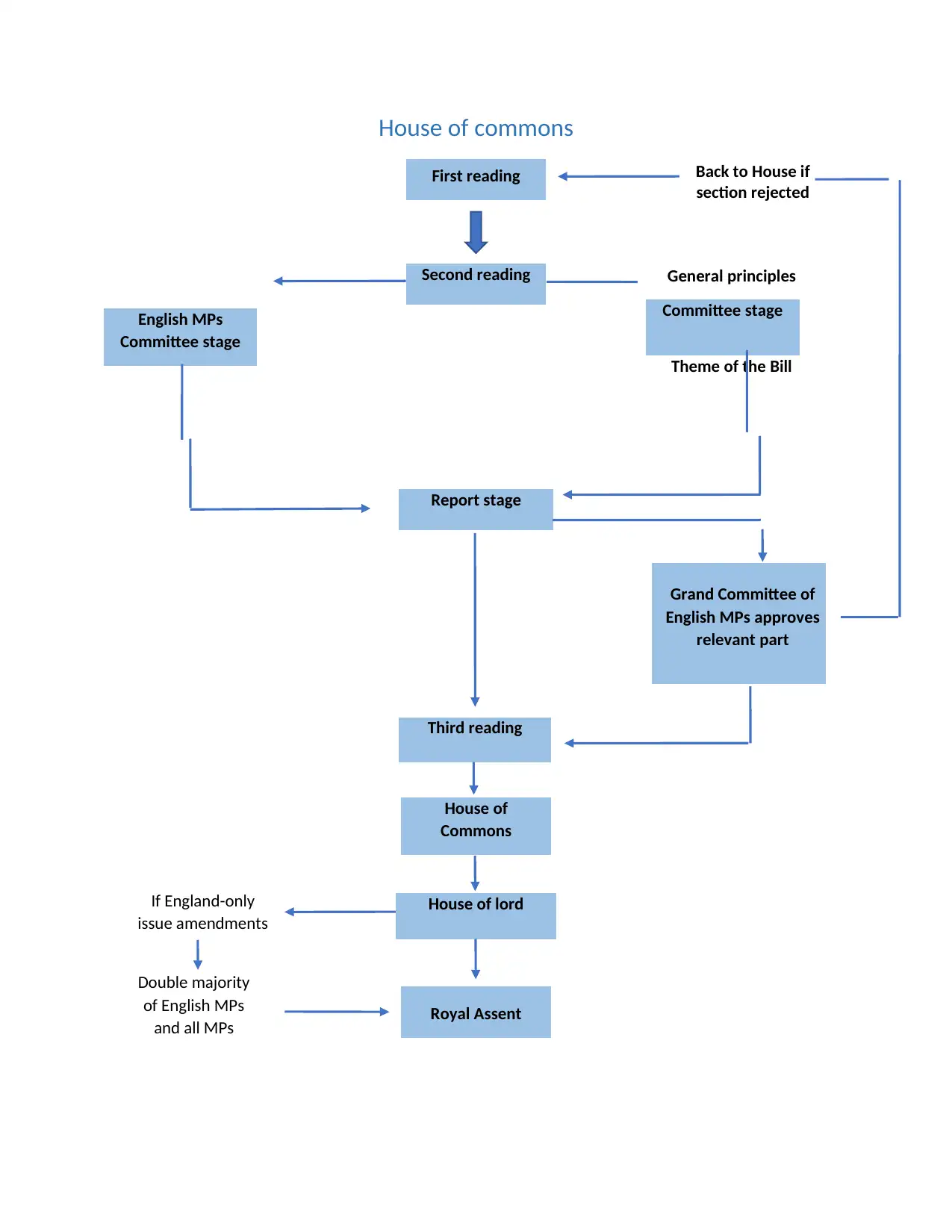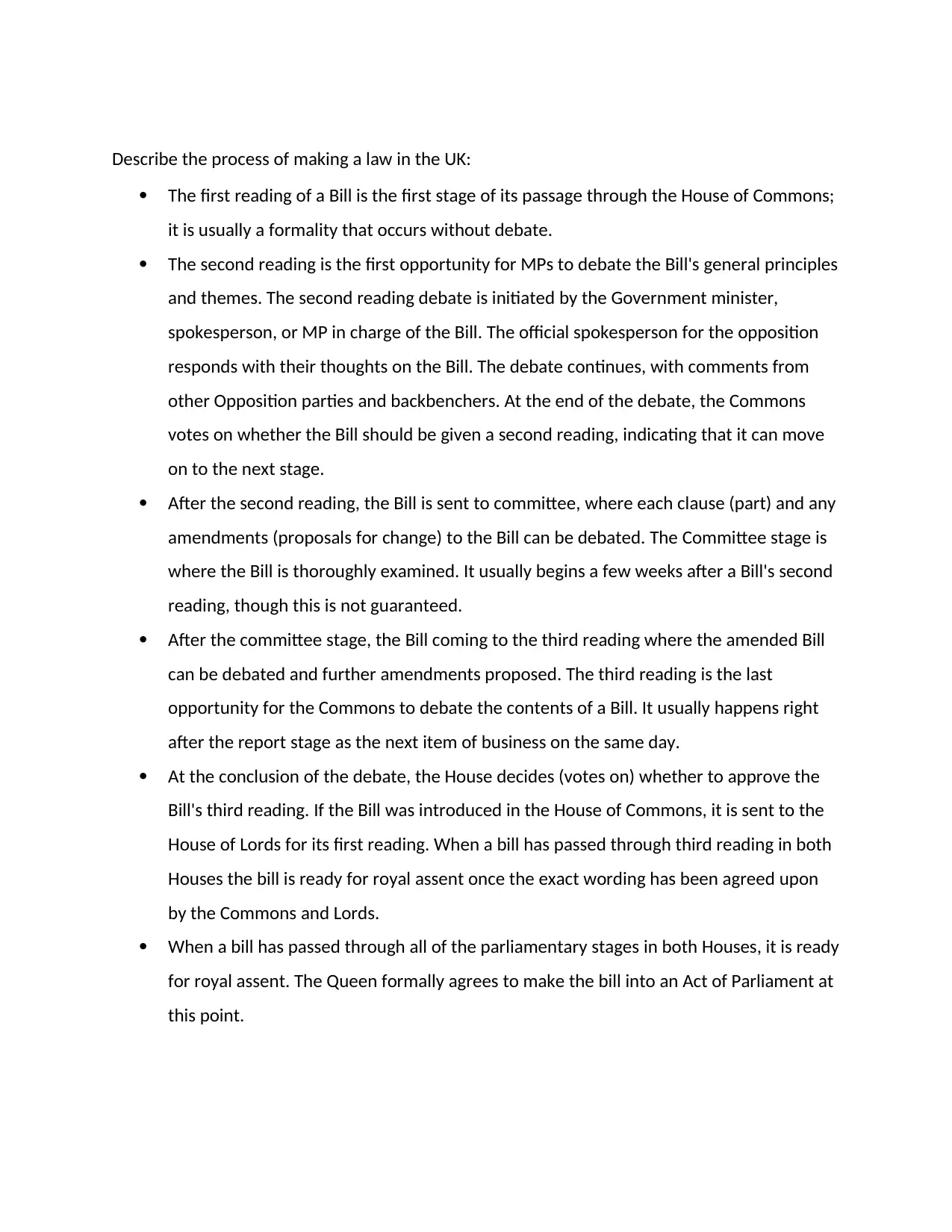The UK Law Making Process: From Bill to Royal Assent
VerifiedAdded on 2022/09/20
|2
|438
|24
Essay
AI Summary
This essay describes the process of making a law in the UK, starting with the first reading in the House of Commons, where the Bill is formally introduced. The second reading allows MPs to debate the general principles and themes of the Bill, followed by the committee stage, where each clause and proposed amendment is thoroughly examined. The report stage and third reading provide further opportunities for debate and amendment before the Bill moves to the House of Lords. After passing through all parliamentary stages in both Houses, the Bill is ready for Royal Assent, where the Queen formally agrees to make it an Act of Parliament, completing the legislative process.
1 out of 2








![[object Object]](/_next/static/media/star-bottom.7253800d.svg)